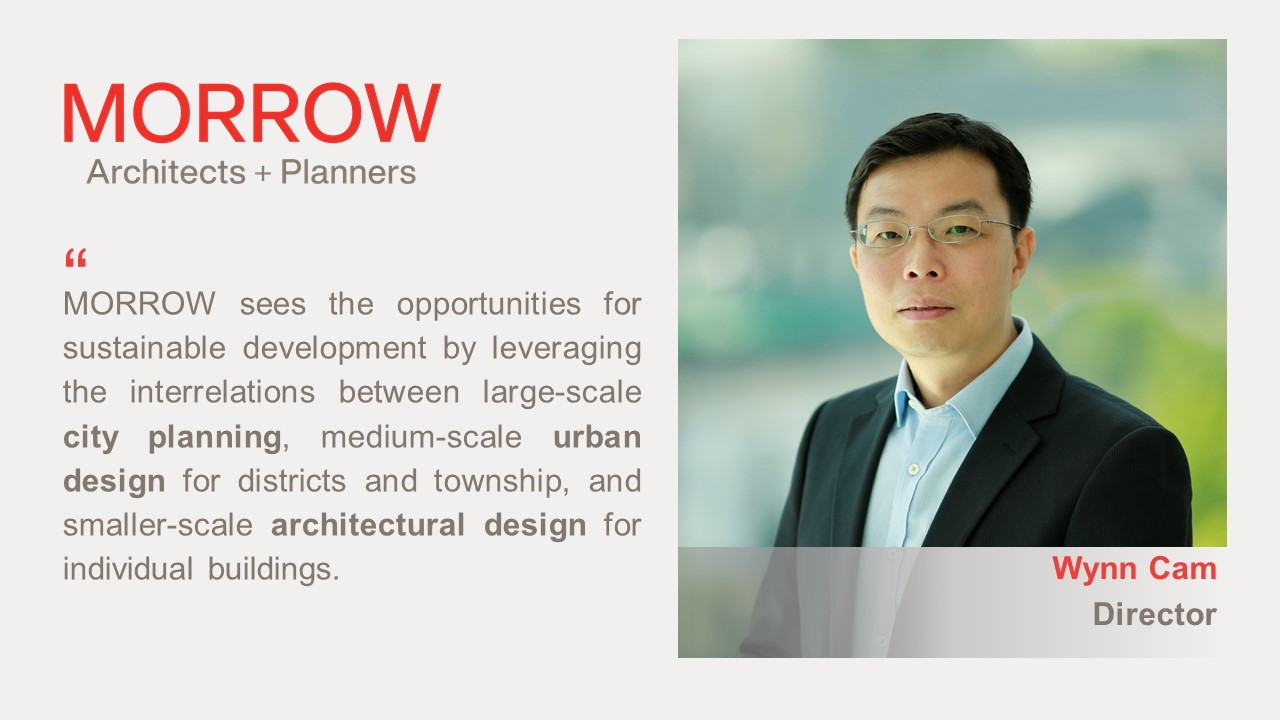As communities worldwide are preparing to exit the pandemic and pandemic-induced crises, sustainable development has emerged as the next focal point in attempting to reverse looming catastrophes induced by climate change. With experiences in urban planning and architecture, MORROW sees opportunities for sustainable development in the built environment by leveraging the inter-relations between large-scale city planning, medium-scale urban design for districts and townships, and smaller-scale architectural design for individual buildings.
City Planning Addresses Climate Change at a Strategic Level
The United Nations projects that the global urban population will grow another 2.5 billion by 2050, with almost 90% of this growth in Asia and Africa. Assuming half of this new population were to be housed in future urbanised cities, each with about three million population – a mid-range figure based on MORROW’s Intelligent Planning System, the world would need over 400 new cities.
As developing many of these new cities from existing non-urbanized areas is unavoidable, planners should seize the opportunity to create liveable and sustainable cities from the ground up. Therefore, it is paramount for each city to have a coherently integrated master plan to direct smaller-scale developments in alignment with the city’s sustainability trajectory.
With these objectives in mind, MORROW has developed a comprehensive Intelligent Planning system, which facilitates newly planned cities to be
1. Harmonious with the natural environment by insisting on preserving and even restoring ecologically sensitive areas and locating infrastructure and built environment outside rather than infringing on them.
2. Resilient from climate-change-induced risks, such as carefully mapping developable land for infrastructure and buildings to be away from flood-prone areas.
3. Economic engines of growth by identifying the niche economic sector(s) implicit to the local context and planning for an ecosystem to support these sectors.
4. Efficient resource consumption, such as being energy efficient by avoiding potential traffic congestions caused by poorly planned road networks and incompatible land-use distribution. Unnecessary traveling can be reduced by logically decentralized workplaces, commercial amenities, and community services hierarchically for ease of access by residents living in different parts of the city.
Urban Design Creates Positive Micro-Climates and Livability
After city planning, urban design works on a smaller scale to guide the development of urban forms in three dimensions. Urban design has the unique ability to shape positive micro-climates and create a network to magnify the benefits.
Some examples include: taking advantage of prevailing wind directions and water bodies for evaporative cooling during summer, allowing higher heights for buildings fronting prevailing cold winter wind for a less windy neighbourhood behind, designing urban streets to break down the speed of cold winter wind, controlling building height to ensure sunlight accessibility for all residential units during cold winter, etc.
Also, as urban design dictates the look and feel of a district, township, and neighbourhoods, a well-thought-out urban design has the influential power to foster socially coherent communities and create conducive live-work-learn-play environments.
Architectural Design Facilitates Sustainable Practices
A sound master plan and a good set of urban design guidelines offer a positive macro context for architects to carry out green building design. For example, land parcellation from the urban design stage should position buildings to minimize their west-facing façade, receive maximal sunlight during the winter, and capture prevailing wind during the hot summer.
The approach to sustainable buildings should first maximize the opportunities presented by its context, apply passive design strategies, deploy active strategies with energy-efficient M&E equipment, and lastly, tap on readily onsite available renewable energy sources. Furthermore, with an aesthetic sense, architects can transform physical green features and spaces into delightful places for enjoyment by users and the community, who will then be subtly nudged into sustainable lifestyles and practices.
Architectural Design Experiences Benefiting well-thought-out Urban Plans
So far, we have discussed the logical approach towards a sustainable built environment from city to building scale. Such an approach can be meaningfully strengthened with the combination of skillsets of both planners and architects. The experiences of architects in building design are valuable feedback to planning at an urban scale, so that future urban plans can avoid posing unnecessary constraints for architectural design, and create positive contextual conditions for architectural design to optimize their contribution towards sustainability. Therefore, it is a productive and meaningful approach to deliver a sustainable built environment holistically by creating and upholding positive inter-relations between a master plan and architectural design.
About the Author:
Read more about Wynn’s experience and projects here, and follow him on LinkedIn here.


